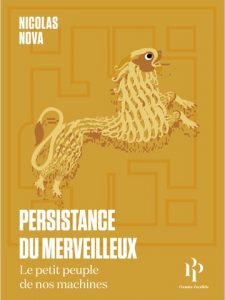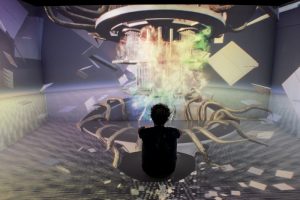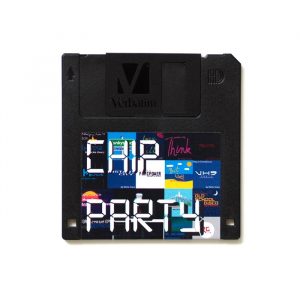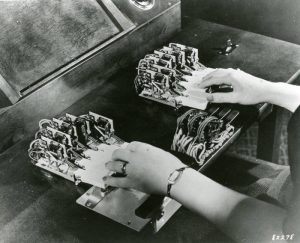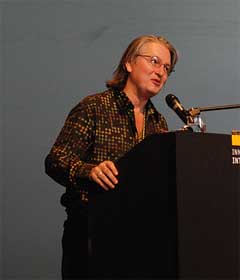 As Innovationsforum Interaktionsdesign was trying to reflect the whole spectrum of interaction design and innovation, they needed the voice of a visionary. Who else than Bruce Sterling, author of Shaping Things, could fit the bill?
As Innovationsforum Interaktionsdesign was trying to reflect the whole spectrum of interaction design and innovation, they needed the voice of a visionary. Who else than Bruce Sterling, author of Shaping Things, could fit the bill?
Now when Bruce Sterling talks, you just shut up, listen and enjoy. You don’t f… do like me: you don’t try to take notes.
(Nearly) random snippets from when i was not just listening:
Internet of things, spy chips, everyware, digital media, ubiquitous computing, pervasive computing, etc. Think about it as things, objects not networks.
*****
Coming through the convergence of technologies, are the Spime. 6 qualities distinguishes them:
– they are conceived and designed within a network,
– they are given a unique (digital) identity distinct from the others,
– they are physically fabricated as opposed to manufactured in a factory. They are not made until they are sold,
– they can be tracked through technologies of geo-localization,
– they can be searched out through network search engines,
– they are designed for disassembling.
– then there’s a 7th one: they leave an historical trace behind them, a valuable pool of metadata.
*****
“A computer interface for everything in the world: that doesn’t sound realistic but that’s because i’m a visionary, it’s not my job to be realistic! Something like that is going to happen. It’s going to be difficult but you’re going to do it. And you will be getting a lot of money when you succeed in doing a part of it.”
*****
Robots were invented by Czech writer Karel Čapek in his play R.U.R. (Rossum’s Universal Robots) which was written in 1920 – technology problem dressed up as a human being.
*****
Augemented Reality is a dated idea.
Net is a reality not a fantasm.
The cell phone is a metamedium, it has taken the role of an answering machine, a camera, a video camera, a wallet, a fax, a dicatphone, an FM radio, an AM radio, a music player, a video player, a pedometer, GPS, a barcode reader, car-keys, etc.
*****
Do i want to interact with my toothbrush? What’s the toothbrush of the future? A toothbrush that advertises that if you upgrade it you’ll get 20% more of the plaque removed. Nah! That’s boring. How about the new Apple iBrush? It takes pictures of the holes in my teeth and sends the images online. Do we want toothbloggers?
*****
Never thinking about objects: that’s the way it should go between objects and human beings. Design should let users obsess less about objects.
*****
Google has started to scare me, yet it’s become impossible not to use it anymore.
*****
I want to be able to give a device (let’s make it a tablet) to a four year old boy and let him tour the world. He could go to downtown New Delhi. The tablet will book the plane trip, get him through the controls at the airport, order a special meal, play games, pay the taxi from the airport, book the hotel, bring him to favourite food places, etc. The tablet can do all that for him. It has biometrics so no one but the toddler can use the tablet. The tablet would send twitter messages to his mum every 15 seconds. It’s like he never left! And of course the device has geo-locative capabilities to tell her where her son is exactly. The kid doesn’t have to learn how to use it, doesn’t have to be careful, doesn’t have to be afraid to loose his passport or wallet.
There’s not many technical pieces missing! Only thing is that you don’t send a toddler to New Delhi.
*****
In Bruce Sterling’s book there are some strange paragraphs, but none of them is strange enough to reflect the strangeness of our future.
*****
No place left to hide from interactivity. Research and Developments and Science-fiction might not have the same audience, exposition nor use the same techniques but they work in the same conceptual space.

